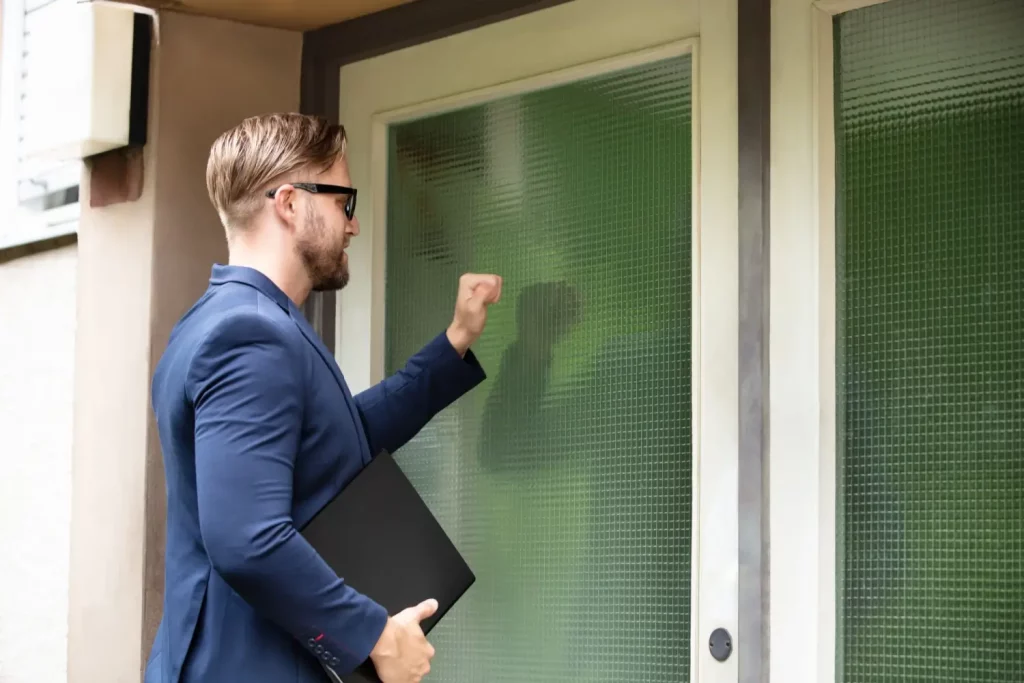Dealing with money problems can be really tough. When you owe a lot of money and feel like you’re sinking, knowing your options is important. One choice you might have heard of is something called a “consumer proposal.” But how bad is it, and what does it mean for you?
In this blog, we’ll explain everything you need to know about consumer proposals. At Harris & Partners, we don’t make things more complicated than they need to be. Instead, we give you the facts you need to make a smart decision about your money. Let’s get into it.
- What is a consumer proposal?
- How does a consumer proposal work?
- Do creditors usually accept consumer proposals?
- Consumer proposal pros and cons
- Consumer proposal vs bankruptcy – which is better?
- Regain Financial Control with Harris & Partners
What is a Consumer Proposal?
A consumer proposal is a financial lifeline for anyone dealing with overwhelming debt. It’s a legal process designed to help individuals regain control of their finances and find a way out of debt while avoiding the stress of bankruptcy.
How does a consumer proposal work?
Let’s delve into the nuts and bolts of what a consumer proposal is and how it works.
Step 1: Seeking Professional Guidance
The first step in the consumer proposal process is to connect with a Licensed Insolvency Trustee (LIT), like us at Harris & Partners. We will support you throughout the process, offering advice that’s backed by years of experience and tailored to your unique situation.
Step 2: Financial Assessment
The next phase involves gathering your financial information. This step is really important, as it helps your trustee create a full picture of your financial health. You’ll need to provide details about your income, expenses, assets, and, most importantly, your debts. These conversations are always completely confidential.
Step 3: Crafting the Proposal
With your financial information in hand, your LIT will work with you to craft a consumer proposal. This proposal is essentially an offer you make to your creditors, proposing to pay them a portion of what you owe over an extended period. The proposal must be fair and reasonable, considering your income, assets, and the interests of your creditors.
Step 4: Filing the Proposal
Once the consumer proposal is prepared, it’s time to officially file it with your creditors. Your LIT will do this on your behalf. Once this is done, the proposal immediately stops creditors from taking any legal action against you. This means no more collection calls, wage garnishments, or threats of legal action.
Step 5: Legal Protections and Negotiations
One of the main advantages of a consumer proposal is the legal protection it offers. Your creditors must legally stop their collection efforts. They’ll have 45 days to review the proposal and decide whether to accept or reject it. During this period, your LIT may negotiate with your creditors to ensure the proposal is acceptable to all parties involved.
If the majority of your creditors agree to the proposal, it becomes legally binding for all of them, and you can breathe a sigh of relief. You’ll be making manageable monthly payments to your LIT, who will then distribute the funds to your creditors.
Do Creditors Usually Accept Consumer Proposals?
Creditors usually have a positive view of consumer proposals, as they provide them with a structured plan for repayment. This usually leaves them better off than the uncertainties of bankruptcy.
In a consumer proposal, creditors typically receive a portion of what’s owed to them, which is preferable to potentially getting less – or nothing – through a bankruptcy process.
The key to getting a successful consumer proposal is offering a fair deal that balances your ability to pay what you can with your lenders’ need to recover a portion of their funds. Generally, if the terms are reasonable and show a clear effort towards repayment, creditors are likely to accept your consumer proposal.
Advantages and Disadvantages of a Consumer Proposal
Consumer proposals come with their own set of advantages and disadvantages. Let’s explore these pros and cons to help you make an informed choice.
Advantages of a Consumer Proposal
Some of the main advantages of a consumer proposal are:
Debt Reduction
A consumer proposal often results in a large reduction of your debts, meaning you pay back only a portion of what you owe.
One Monthly Payment
Instead of juggling multiple creditors and varying interest rates, a consumer proposal consolidates your debt into a single, manageable monthly payment that you send to your LIT.
Legal Protections
As soon as your proposal is filed, you gain legal protection from creditors’ actions. This means an end to collection calls, wage garnishments, and legal proceedings.
No Interest Accumulation
Unlike some other debt relief options, consumer proposals freeze the interest on your debts. This prevents your debt from growing larger while you work to repay it.
Financial Fresh Start
Completing a consumer proposal allows you to hit the financial reset button.
Disadvantages of a Consumer Proposal
Some of the main disadvantages of a consumer proposal are:
Credit Rating Impact
Consumer proposals can have a negative impact on your credit rating. They will be listed on your credit report for several years, affecting your ability to borrow more money during that time.
Limited Access to Credit
While under a consumer proposal, you may find it challenging to borrow more money. Lenders may view you as a higher risk, and if they do extend credit, it may come with higher interest rates. However, getting a line of credit is not illegal and is actually encouraged to help rebuild your credit.
Secured Debt Not Included
Consumer proposals do not cover secured debts like mortgages or car loans. You’ll still be responsible for making these payments if you want to keep your assets.
Public Record
Consumer proposals are public records, which means anyone who checks your credit report can view them.
Consumer Proposal vs Bankruptcy – Which Is Better?
The debt relief solution most often compared to consumer proposals is bankruptcy. Let’s compare them to help you understand which might be the right path for you.
1. Credit Impact:
Bankruptcy
Filing for bankruptcy typically has a more severe and longer-lasting impact on your credit score. A first-time bankruptcy will remain on your credit report for at least six years after your discharge, while a second is 14 years after discharge.
Consumer Proposal
While a consumer proposal does affect your credit rating, it generally has a less severe impact than bankruptcy. A proposal will stay on your credit report until three years after you complete your payments or six years after you file, whatever comes first, giving you the opportunity to rebuild your credit sooner.
2. Asset Protection:
Bankruptcy
In a bankruptcy, you may have to hand over your assets to your trustee. They will then use these to repay your creditors. This can include valuable possessions or even your home, in some cases.
Consumer Proposal
You retain control of your assets under a consumer proposal. You don’t risk losing your home or other essential possessions as long as you continue making agreed-upon payments.
3. Time Frame:
Bankruptcy
Bankruptcy generally has a shorter timeline for discharge, within 9 to 21 months if it is your first bankruptcy or 24 to 36 months for a second or more.
Consumer Proposal
A consumer proposal typically lasts longer than bankruptcy, with a maximum length of up to five years. While this means a more extended commitment, it can also result in reduced payment and a less severe impact on your credit.
4. Costs and Long-Term Consequences:
Bankruptcy
The cost of filing for bankruptcy typically includes fees to the trustee, administrative costs, and potentially a portion of your assets. The long-term consequences may include limited access to credit, potential difficulty renting, and a marked impact on your financial reputation.
Consumer Proposal
While costs are associated with a consumer proposal, they are often lower than those of bankruptcy. The long-term consequences are generally more manageable, allowing you to rebuild your financial life with fewer restrictions on credit access, renting, or employment prospects.
For a more in-depth comparison, look at our article comparing consumer proposals and bankruptcies.
Regain Financial Control with Harris & Partners
If you’re considering a consumer proposal or need some advice on which debt solution is right for you, look no further than Harris & Partners.
Our Licensed Insolvency Trustees have years of experience in helping people just like you. We know how crushing the weight of debt can feel, but you don’t have to face it alone.
When you partner with us, we take the time to fully understand your situation, giving you a judgment-free space to talk openly about the struggles you’re facing. We are always on hand to answer any question you may have and support you every step of the way.
Get in touch today and start your journey towards financial freedom.











